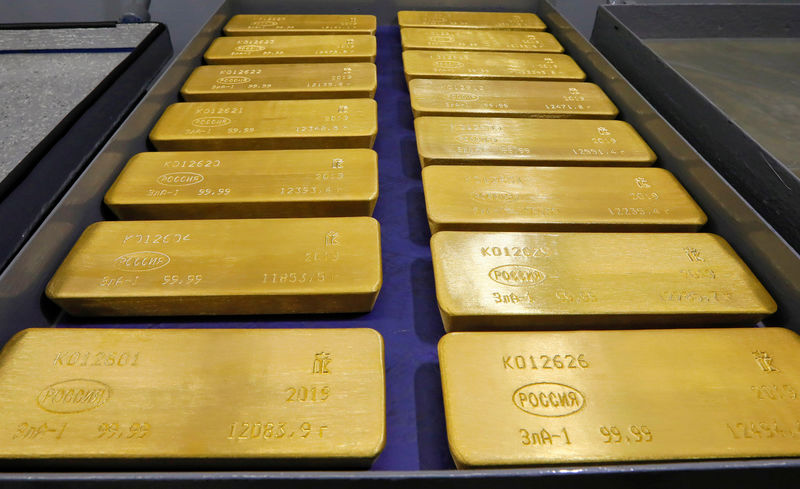By Ambar Warrick
Investing.com -- Gold prices inched higher on Friday after pulling back sharply from nine-month highs in the prior session as the dollar rebounded in anticipation of key nonfarm payrolls data, while other economic readings showed some strength in the labor market.
While the Federal Reserve recently noted that inflation was easing, markets feared that resilience in the jobs market could keep price pressures stubbornly higher for longer. Jobless claims unexpectedly fell in the prior week, while other data showed U.S. automobile sales grew in January.
The dollar rebounded from a nine-month low after the readings, given that relatively high inflation could keep the Fed raising interest rates this year - a negative scenario for gold and metal markets.
Spot gold rose 0.2% to $1,915.37 an ounce, while gold futures fell 0.1% to $1,929.50 an ounce by 19:16 ET (00:16 GMT). Both instruments plummeted nearly 2% on Thursday after surging to a nine-month high earlier in the session, and were set to lose 0.6% this week.
The yellow metal marked wild swings in recent sessions, and was set to break a six-week gaining streak as investors re-evaluated their expectations of U.S. monetary policy.
The better-than-expected unemployment claims reading, coupled with fears of strong nonfarm payrolls data later today, saw investors reevaluate their bets that inflation will slow at a quicker-than-expected pace.
This saw the dollar recover sharply against a basket of currencies on Thursday. The greenback was also aided by weakness in the euro and the British pound, after their respective central banks hinted at a potential end to their rate hike cycles.
Other precious metals also retreated this week, and were muted on Friday. Platinum futures steadied around $1,032.15 an ounce, while silver futures held at $23.615 an ounce.
Among industrial metals, copper prices steadied on Friday, but were set for steep weekly losses amid growing fears of a global recession this year.
High-grade copper futures rose 0.3% to $4.0968 a pound, but were down nearly 3% this week as markets feared that rising interest rates will crimp global economic growth.
Mixed economic readings from China also drove up uncertainty over the timing of an economic recovery in the world’s largest copper importer.
